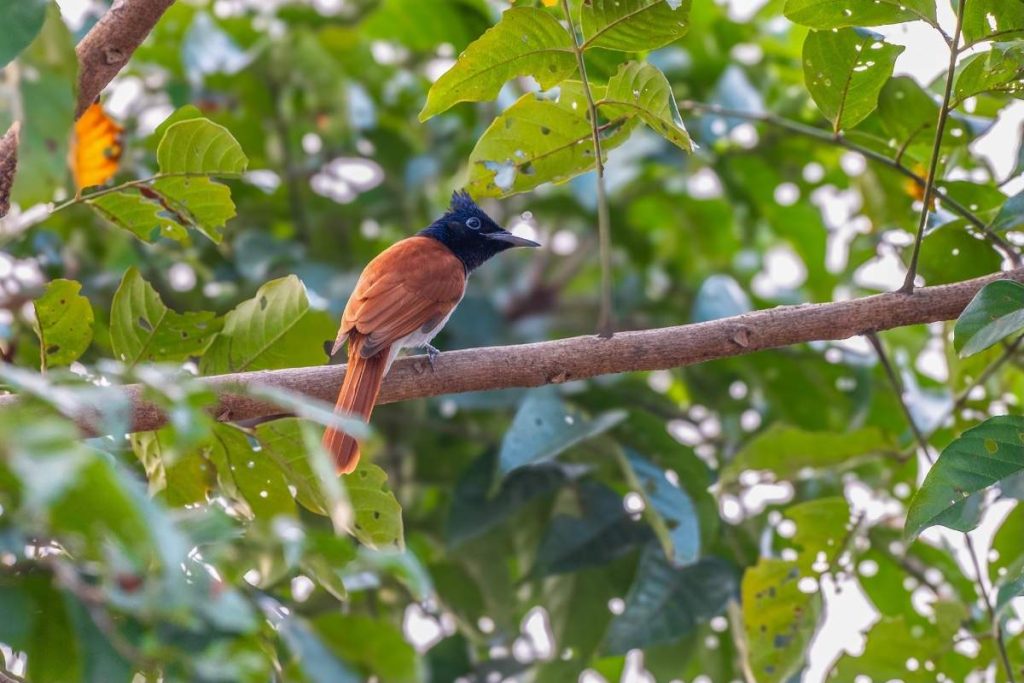The Indian paradise flycatcher (Terpsiphone paradisi), native to Asia, is a medium-sized bird with distinctive long tails and vibrant plumage, found across regions like Myanmar, Central Asia, and India.
Native to Asia, the medium-sized passerine bird known as the Indian paradise flycatcher (Terpsiphone paradisi) is found throughout the region. Since 2004, it has been categorized as Least Concern on the IUCN Red List because the world’s population is thought to be stable. It is indigenous to Myanmar, Central Asia, and the Indian. An adult Indian paradise flycatcher’s length ranges from 19 to 22 cm (7.5 to 8.7 in). Their eyes are black, their bill is big and robust, and their glossy black heads have a black cap and crest. Females have a grayish throat and underparts and a rufous back. They have wings that measure 86-92 mm (3.4-3.6 in).

Charming Stare Perched in elegance, watching the world unfold.
Young boys have blue-ringed eyes and a black neck, but otherwise resemble females. Adults have drooping streamers up to 30 cm (12 in) long, with two central tail feathers developing up to 24 cm (9.4 in) long. Young males have short tails and are rufous. In their second or third year, they develop lengthy tails. Male adults are either all white or mostly brilliant rufous above.

Majestic Perch A fleeting moment of true elegance captured.
Certain specimens show intermediacy between rufous and white. Long-tailed rufous birds lack shaft streaks, but white species may have them on wing and tail edges. As a migratory bird, the Indian paradise flycatcher winters in tropical Asia. During winter, local breeders and migrants settle in southern India and Sri Lanka, especially in the highlands and west.

Majestic View The flycatcher, observing with regal calmness.
Indian paradise flycatchers reproduce from May through July. Males and females actively construct nests, incubate eggs, brood, and feed their young since they are socially monogamous. The incubation period lasts 14 to 16 days, while the nestling stage lasts 9 to 12 days. To deter predators, bee-eaters occasionally build their nests near a breeding pair of drongos. The female lays up to four eggs in a tidy cup nest made from twigs and spider webs at the end of a low branch. Consequently, the chicks hatch in approximately 21 to 23 days. Furthermore, observers have witnessed Indian white-eyes feeding paradise flycatcher chicks, demonstrating an instance of interspecific feeding.
Copyrights : All the photos and texts in this post are the copyright of John Thomas and Creative Hut Institute of Photography and Film. Their reproduction, full or part, is forbidden without the explicit approval of the right owners.


